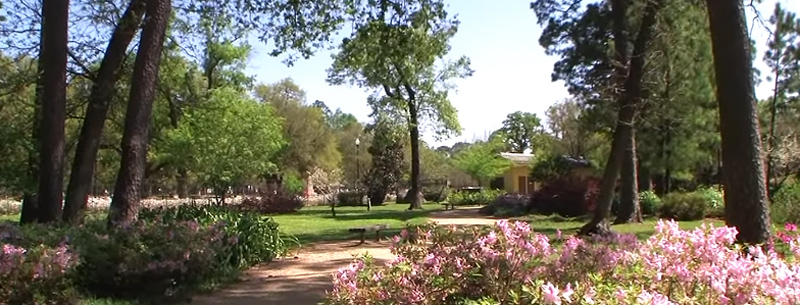Houston 4 Best Outdoor and Adventure Activities
Although I appreciate the culture, foodie scene, and endless options available in large cities, there are also times when I crave peace from the bustle. I am drawn to pockets of calm to break up that ‘get there yesterday,’ atmosphere that is characteristic of a metropolis. Houston is the fourth biggest city in the country, covering 656 square miles (to put that in perspective, Manhattan is 23 square miles in size). However, there are a surprising number of natural attractions and patches of green space in Houston.
Japanese Garden
This is by no means the artfully made-up geisha girl of Japanese gardens. It’s more like her unruly little sister whose lipstick is smeared and who abandoned her uncomfortable clogs near the koi pond. Sure, the garden has the required stone lanterns, fish, and bridges but it has a slightly disheveled appearance and I like that lack of rigid precision.
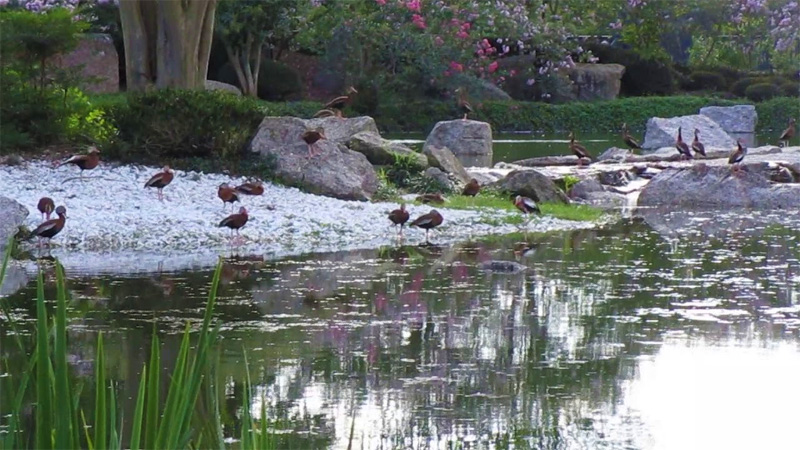
The path weaves between Japanese maples and cherry trees and, while the garden isn’t expansive, there are plenty of water features. The pond is stocked with koi that look like they won a hotdog eating contest – seriously, you’d be hard-pressed to hoist these finned fellows above your head. Not that I’m suggesting you try. You can still hear the occasional horn and the hum of traffic, but Hermann Park’s Japanese Garden is definitely an oasis in the city.
- Admission is free.
- Please don’t wander off the path.
- Leashed dogs are welcome.
Cockrell Butterfly Center
The Hermann Park Conservancy crams in a lot of natural attractions. The Japanese Garden borders McGovern Lake and a reflection pool complete with an obelisk (it’s very reminiscent of D.C.). Hermann Park also includes the Houston Zoo and the Museum of Natural Sciences, which has a butterfly center.
Admittedly, any place with gaggles of color-coded school kids is rarely quiet. But, there’s something about watching butterflies lazily flapping their way around the huge glass dome of the Cockrell Butterfly Center that offers the kind of Zen usually only achieved through meditation. A three-story waterfall dilutes the details of any surrounding noise, leaving you free to track the wingbeats of vivid yellow butterflies, black ones with fuchsia spots, or… well, it’s the United Nations of butterfly gatherings and there are specimens in every color and size.
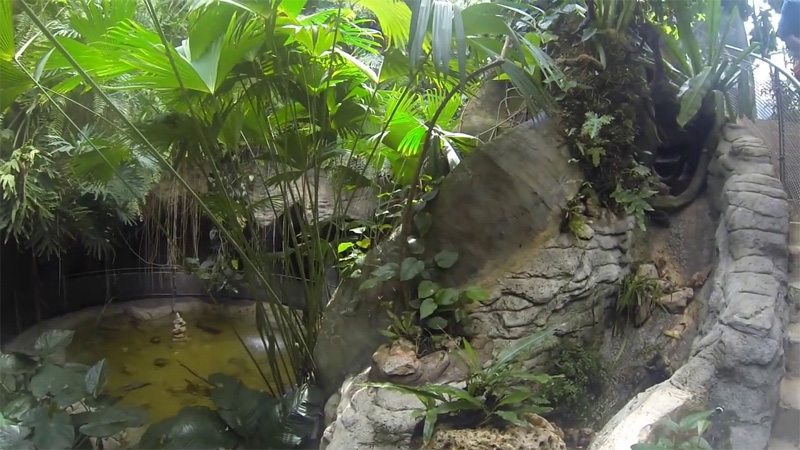
Feeders are scattered throughout the Butterfly Center and I saw several brown butterflies balanced on pieces of fruit, napping off a food coma. But you don’t need to find the feeders to experience the butterflies up close. The population is similar to that of screaming nine-year-olds at a Justin Bieber concert – more than you imagined was possible.
Other resident critters include bees (contained within the glass) at work on a honeycomb and a Mexican iguana that, while vegetarian, makes an exception when it comes to inquisitive fingers. I can’t verify the biting part, as I wasn’t stupid enough to test the veracity of the sign.
- You can buy tickets for the just Butterfly Center and are not required to add on museum admission.
- Before entering the dome, pick up a laminated card with images and names of the butterflies so you know what specimens are swooping overhead.
- Don’t touch the butterflies. I rolled my eyes because this seemed such an obvious rule, but when they fly right up to you, it’s hard to resist reaching out.
- Tie back long hair if you dislike the thought of butterflies landing on it. Not a bad idea anyway, as it’s hot and damp inside.
- Take your time on the paths – they are short as most of the space is vertical.
- If you actually want to learn about butterflies, there is a comprehensive and interactive learning area, complete with a white-eyed assassin beetle (coolest name in the bug world) before you enter the dome.
Houston Arboretum
The Houston Arboretum gives you a glimpse at what this section of Texas would be like if Houston had never happened. Don’t expect sculpted flowerbeds or meticulously labeled trees. The Arboretum offers three main habitats: pond, forest, and meadow. Each supports different species of flora and fauna.
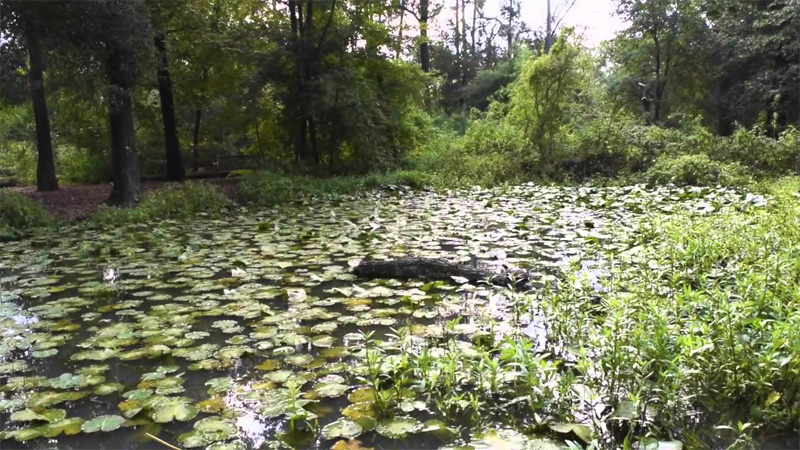
Trails are well maintained and consist of soft mulch or wooden walkways. Many routes are half a mile or less in length, but you could easily cover more ground by choosing the outer loop (2 miles) and adding in some of the other trails. The Arboretum’s less typical features include a birding platform, a sensory garden, and the Palmetto Multi-sensory Trail. The latter is open to all but was planned with the visually-impaired in mind.
There is a visitor’s center, which has several educational displays. When we went, there was one focusing on animal eggs, including a penguin egg.
- Admission is free, but donations are appreciated.
- There were signs warning visitors to keep an eye out for snakes on the path.
- Mosquito repellant recommended.
- Leashed dogs are allowed and they can even become members!
Edith L. Moore Nature Sanctuary
After multiple wrong turns, we began to suspect that the Edith L. Moore Nature Sanctuary was the product of a sadistic mapmaker’s imagination. It was the location – in the middle of an affluent subdivision – that threw us. On the plus side, it truly offers a respite from the city and I’d recommend this one for solitude seekers.
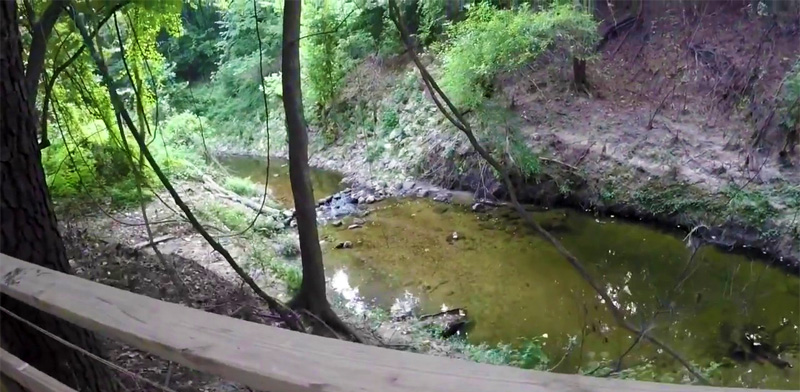
A couple of trails cross this 17.5-acre strip of land, which hugs the banks of Rummel Creek. However, there is only one bridge crossing the water, so bear that in mind if you opt for one of the longer routes.
On our trek, we spied robins, woodpeckers, squirrels, and bunnies. There is also a pond, complete with turtles.
- To reach the sanctuary from Memorial Drive, turn onto Wilchester Blvd. Make a quick left to enter the sanctuary. Although the entrance looks small, it is intended for cars and there are a few parking spaces inside. Another option is to park in the church parking lot on Memorial Drive (easier to find) and enter on foot through one of the pedestrian gates.
- Guided tours are an option.
- There is a restored log cabin on site.
- Stay on the trails.
- Mosquito repellant recommended.
- Leave Fido at home for this one.
